Reading JSON Data
JSON (JavaScript Object Notation) is a very common data format used for the asynchronous client-server communication. It is easy for humans to read and write. It is easy for machines to parse and generate. In this article, you’ll learn how to fetch and extract desired parts of JSON data from HTTP API endpoints using XOD.
JSON data types #
JSON uses a few basic data types which allow describing arbitrary complex structures when nested. They are:
- Object: an unordered collection of name–value pairs where the names (also called keys) are strings. Objects are delimited with curly brackets and use commas to separate each pair, while within each pair the colon ‘:’ character separates the key or name from its value.
- Array: an ordered list of zero or more values, each of which may be of any type. Arrays use square bracket notation with comma-separated elements.
- Number: a signed decimal number that may contain a fractional part and may use exponential E notation, but cannot include non-numbers such as NaN. The format makes no distinction between integer and floating-point.
- String: a sequence of zero or more characters. Strings are delimited with double-quotation marks and support a backslash escaping syntax.
- Boolean: either of the values
trueorfalse - null: An empty value, using the word
null


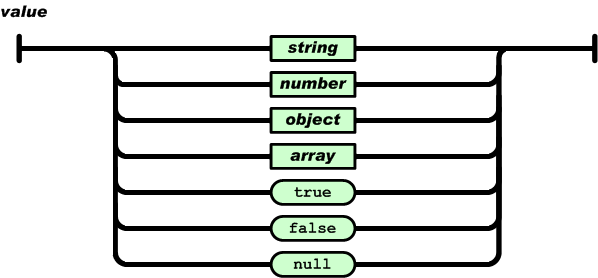
Getting data #
To easily fetch JSON documents from the internet, use xod/net/http-get-json node. It is very similar to xod/net/http-get described in Fetching Data from Web API’s with HTTP GET requests, but instead of the byte-stream outputs a stream of parsed JSON chunks. Stream processing allows handling even very large responses that would not fit into the controller’s memory.
If you want to process JSON from another source, use the low-level xod/json/parse-json node instead.
Traversing objects #
Let’s say you receive a response like this:
{
"count": 42,
"last-updated": {
"day": 3,
"month": 9,
"year": 2019
}
}
Let’s get the count value. Use the xod/json/key node to extract data corresponding to the count key, and then xod/json/number-value to extract the number from that data:
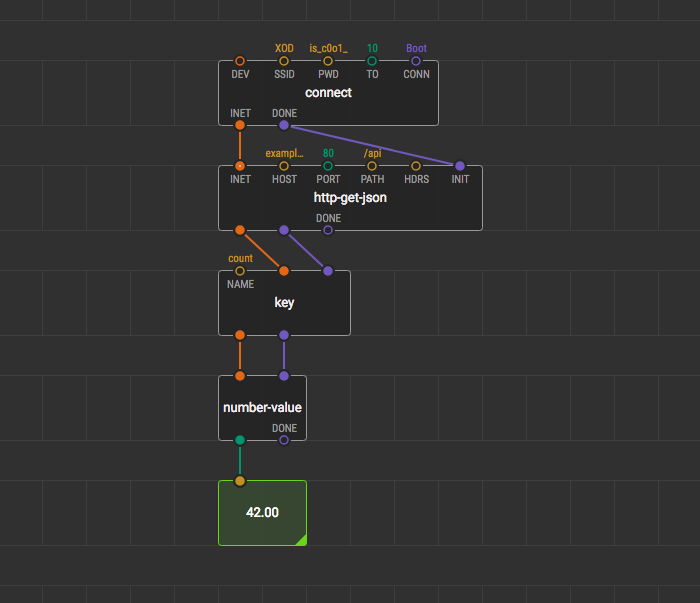
Several key nodes may be chained to extract data from nested objects:
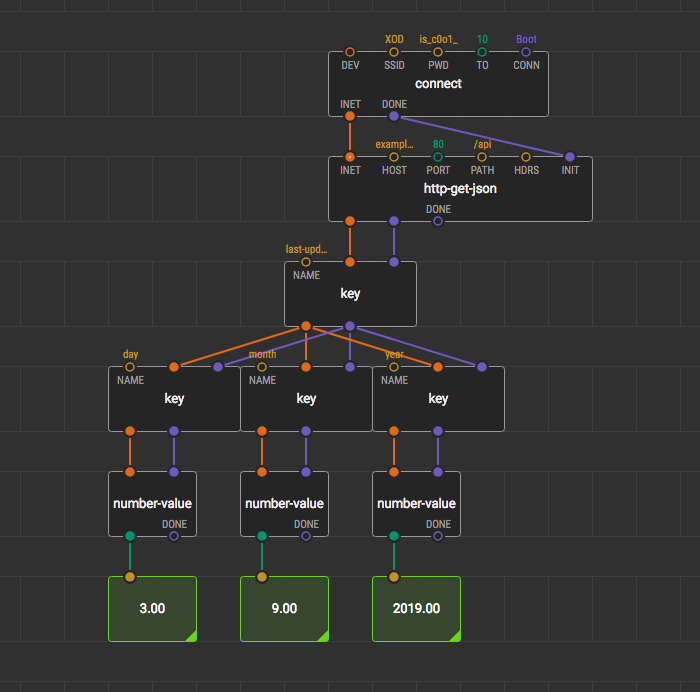
Traversing arrays #
To access an element from an array, use the xod/json/nth node. It works just like key, but instead of the key name, it accepts an item index.
{
"pets": [
{
"name": "Gary",
"species": "snail",
"age": 1,
"has_a_shell": true
},
{
"name": "Roger",
"species": "turtle",
"age": 23,
"has_a_shell": true
},
{
"name": "Jack",
"species": "rabbit",
"age": 2,
"has_a_shell": false
}
]
}
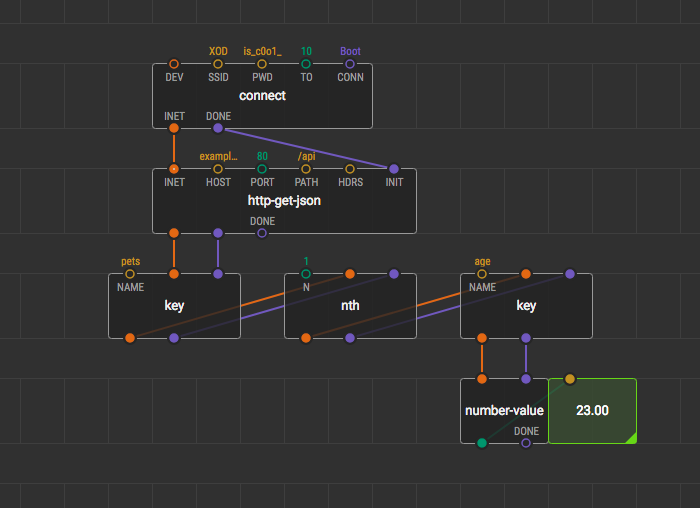
Extracting values #
To extract “primitive” data like numbers, booleans and strings use xod/json/number-value, xod/json/boolean-value and xod/json/string-value:
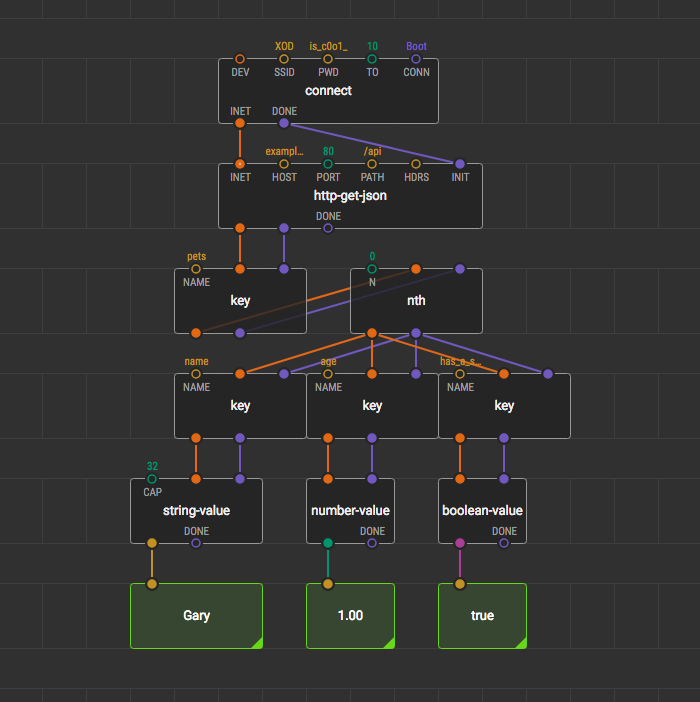
Make sure to specify estimated length of strings in each string-value’s CAP pin. CAP should be no less than expected string length. If it is too small, the string will be truncated. If it is too large, it consumes too much RAM.
Summary #
The xod/json library makes parsing JSON documents quite easy and efficient. The common scenario to consume a JSON document is:
- Feed JSON as a stream of bytes into
parse-jsonnode (or usexod/net/http-get-jsonif you want to get a JSON document from the internet). - Use
keyandnthto “reach” for values in objects and arrays. - Use
number-value,boolean-valueandstring-valueto extract the values of the respective data type.